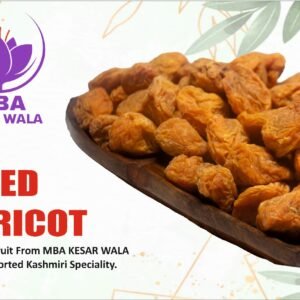
Pine Nuts
₹1,836.00 – ₹6,850.00Price range: ₹1,836.00 through ₹6,850.00 N/A
Buy Pine Nuts Online
1) What is Pine Nuts
Pine nuts, also known as pignoli, are the edible seeds of pine trees. These seeds come from the pinecones of certain species of pine and have been consumed for thousands of years. Pine nuts are small, soft, and have a delicate, buttery flavor.
2) How to Select Pine Nuts
Appearance: Look for pine nuts that are uniform in size and color. They should not appear shriveled, discolored, or with any mold.
Smell: They should smell fresh and not rancid. If they have a sour smell, they may be old or spoiled.
Packaging: Choose pine nuts that are vacuum-sealed or packed in airtight containers to ensure freshness.
3) Benefits
Rich in Nutrients: High in healthy fats (mainly monounsaturated fats), protein, and essential vitamins such as vitamin E and magnesium.
Energy Boost: They contain nutrients that provide sustained energy.
Heart Health: The high content of monounsaturated fats can help lower bad cholesterol levels.
Antioxidants: Pine nuts are packed with antioxidants that help fight free radicals, protecting cells from damage.
Appetite Control: Pinolenic acid found in pine nuts is known to suppress appetite.
4) Packaging Size Available
Pine nuts are available in various packaging sizes, depending on the brand and market:
250g ,500g ,1kgmedium-sized packs
1kg or more for larger quantities
They are commonly sold in resealable bags, jars, or vacuum-sealed pouches to ensure freshness.
5) Uses
Culinary:
Used in making pesto sauce.
Added to salads, grain dishes, and pasta.
Ground and used in baking (cookies, cakes).
Added to stir-fries or roasted vegetables.
Snacking: They can be consumed raw or roasted as a healthy snack.
6) Health Benefits Suitable for Different Groups
Men: Pine nuts support heart health and boost energy. They also contain zinc, which may benefit reproductive health.
Women: High in iron, which is beneficial for women, especially those who are pregnant or menstruating. It also supports skin and hair health due to its high vitamin E content.
Kids: Rich in nutrients like protein, healthy fats, and vitamins essential for growth and development.
Elderly: Pine nuts are easy to digest and contain antioxidants that help in reducing inflammation and improving heart health.
7) Taste
Pine nuts have a slightly sweet, buttery, and nutty flavor. They are soft and creamy in texture when eaten raw, and roasting brings out their rich, earthy flavor.
8) How to Consume
Raw: Eat them directly as a snack.
Roasted: Lightly toast them in a pan or oven to enhance their flavor before adding them to salads or dishes.
Blended: Use them in sauces like pesto.
Baked: Add them to baked goods like bread, cookies, or muffins.
9) How to Store
Short-Term Storage: Store pine nuts in an airtight container in a cool, dark place, away from sunlight.
Long-Term Storage: To extend their shelf life, refrigerate or freeze pine nuts. In the refrigerator, they can last for several months, while in the freezer, they can last up to a year.
10) Product Life
Shelf Life:
At room temperature: 1-2 months.
In the refrigerator: 3-6 months.
In the freezer: Up to a year.
Harvesting Time: Pine nuts are usually harvested in late summer to early fall, depending on the region and pine species.
After harvesting:
Drying: Pine cones are dried to allow the seeds to come out.
Shelling: The pine nuts are extracted from their hard shells.
Packaging: After shelling, pine nuts are sorted, cleaned, and packaged for sale.
| packaging | 1000 GRM, 250 G, 500 G |
|---|
Related products
Kagzi Badam
- 1000 GRMFrom: ₹1,138.00
- 500 GFrom: ₹602.00
Red Apricot
- 250 GFrom: ₹579.00
- 500 GFrom: ₹979.00
Brazil Nuts
- 1000 GRMFrom: ₹1,310.00
- 500 GFrom: ₹682.00
Kashmiri Mamra Badam
- 100 GFrom: ₹1,836.00
- 250 GFrom: ₹4,406.00
- 50 GrmFrom: ₹1,036.00
Gucchi Mushroom
Gulkand
- 100 GFrom: ₹551.00
- 1000 GRMFrom: ₹3,973.00
- 250 GFrom: ₹1,086.00
- 500 GFrom: ₹1,997.00
Green Ealichi
₹465.00 – ₹1,481.00Price range: ₹465.00 through ₹1,481.00 N/A


₹545.00 – ₹1,024.00Price range: ₹545.00 through ₹1,024.00 N/A








Reviews
There are no reviews yet.